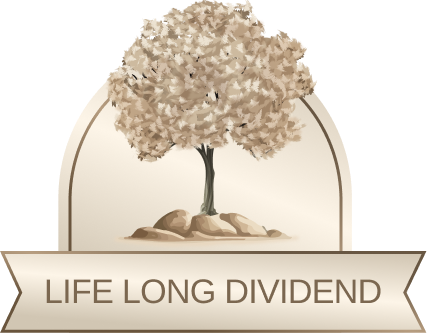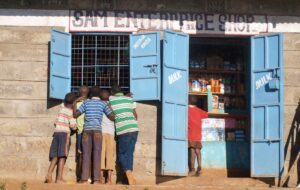Every year, Oxfam publishes its report on world inequality. The statistic is always the same: a very small number of insanely wealthy individuals own most of the world’s wealth. The 2025 edition is no different. The titles and claims are no different: “billionaire wealth surges”; “top 5 ways billionaires are bad for the economy”; “Billionaires’ fortunes are growing at an unimaginable pace” etc.
Nothing is different from the first time I engaged with it in French, my native language, a decade ago. It’s always meant as a criticism of markets, capitalism, neoliberalism or whatever label is in vogue at the time. No different also because it continues to eschew one major criticism – leaving all the other (more technical ones) aside – regarding “missing wealth.”
What missing wealth? That of the world’s poor!
For residents of Western countries, it is easy to imagine being able to prove that a house belongs to us or that a business is ours. All the assets we own are easily recognized. But this reality does not apply everywhere on Earth. In fact, countries with strong recognition of property rights are more the exception than the rule. Indeed, the worldwide norm is a weak protection of property rights as rulers prefer to be able to seize properties if need be or regulate their uses for the purposes of preserving political power.
When individuals cannot have their ownership recognized, their wealth officially does not exist — even though it very much does. In 2000, economist Hernando De Soto studied what he called “dead capital.” The term refers to resources privately owned by individuals but without any formal title of ownership.
For example, a Peruvian citizen might own a small business, but legally that property does not exist. Without legal recognition, it is extremely difficult to make that capital grow. On one hand, this hampers economic growth. On the other hand, it means we vastly underestimate the wealth (read: capital stock) of the world’s poorest populations. In 2000, when De Soto produced the first estimate of the scale of this “dead” (i.e., inactive) capital, the total amounted to about $9.3 trillion (9,300,000,000,000 dollars). At the time, this amounted to approximately 28 percent of global individual income. Assuming that proportion holds today, mobilizing this stock of dead capital at a 5 percent annual return (a highly conservative estimate) would generate an additional $1.49 trillion in output per year—equivalent to roughly 1.4 percent of current world GDP.
This may not seem like much. But there are three reasons why it matters a lot. First, the gains would accrue primarily to those at the very bottom of the global income distribution. If all the extra income went to people in Latin America, the Middle East (minus Saudi Arabia, Qatar, United Arab Emirates and Israel) and Africa, this would amount to around $580 per head. In these regions, incomes per head fluctuate from between $500 to $17,000. For them, such an income boost would be significant. Second, the resulting income boost would raise the baseline from which these economies grow—meaning that even if growth rates remain unchanged, the absolute gains compound more quickly year after year. Third, if part of this capital is channeled into research and innovation, it could permanently increase the growth rate itself. Taken together, these effects could help close the gap between rich and poor countries almost overnight, while also accelerating the pace at which that gap narrows over time.
Unfortunately, De Soto’s calculation has never been updated or expanded, but the problem is widely acknowledged among development economists. When some claim that global wealth disparities are gigantic and growing, they are usually referring only to financial wealth — which does not include this mountain of unusable capital due to lack of legal recognition. Thus, the poorest segments of the world’s population actually hold much more wealth than is commonly believed.
Remember, the reason why dead capital exists in the first place is because property rights are poorly protected in many nations. Because of the insecurity of property rights, owners cannot easily prove ownership. This limits the ability to use de facto assets as collateral or to sell them. It also discourages any investments into existing properties since the fruits thereof cannot be appropriated. It also limits the ability to rent a property to other parties (and as a result, property is more often rented to kin at a discount rather than to the highest bidder). Broadly, the consequence is that these assets stay in the informal economy where they are not used at their full potential.
By preventing the poorest individuals from leveraging the resources they already own, we severely limit the growth potential of developing countries. Moreover, by sending the message that it is not worthwhile to have their existing capital recognized and protected, we also discourage the creation of new capital.
One recent paper, concerned with China’s economic growth, studied a case of property rights reform and confirmed that there was significant amounts of “dead capital” waiting to be unleashed for productive uses. In 2007, China adopted the Property Law, which granted private property the same legal status as public property (a big deal in Communist China). The result was that new private firms emerged and grew in size as their production increased rapidly. This was because they marshalled “dead capital” into highly productive uses—something clearly visible in the rapid rise in output from private firms.
The example of China clearly illustrates the importance of the protection of property rights in bringing “dead capital” to life. The corollary here is that the inequality that Oxfam bemoans does not justify its contempt for “markets” or “capitalism.”
Rather, it justifies its embrace. Legalizing “dead capital” would lead to an acceleration of economic growth in countries where there is more of it. These countries are all poor countries. Embracing the true foundation of a well-functioning market economy – the protection of property rights – would help cure the ill that Oxfam complains about.

